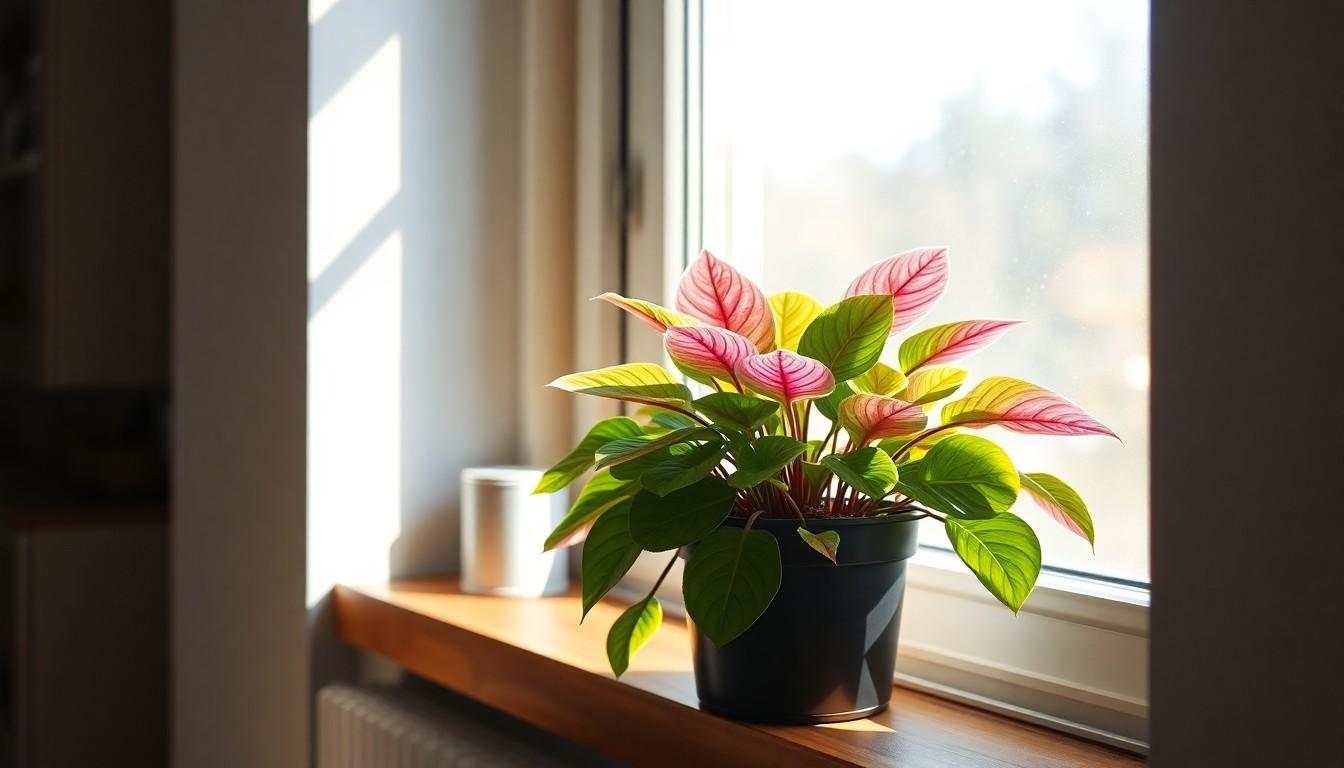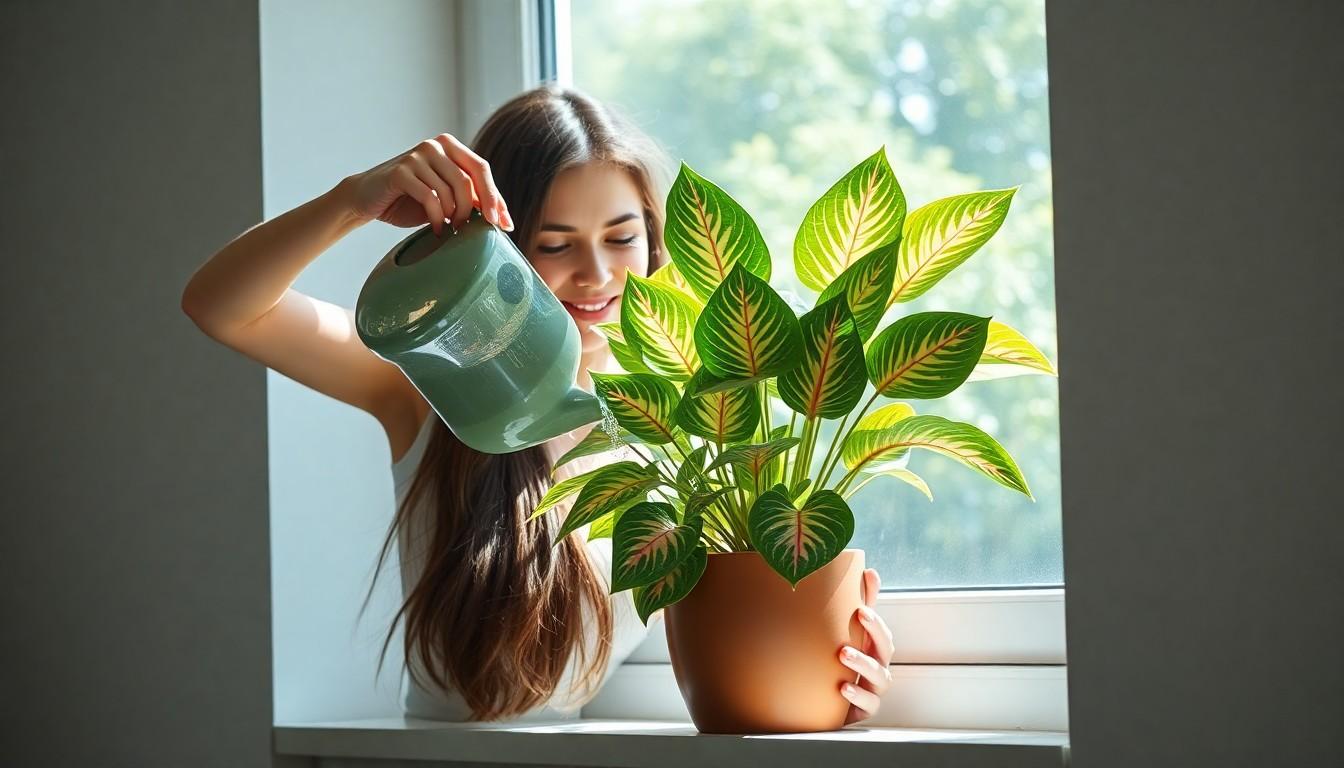If you’re looking to add a splash of color to your indoor jungle, the fittonia plant care might just be your new best friend. Known for its vibrant leaves and charming personality, this little guy can turn any dull corner into a lush paradise. But don’t let its delicate appearance fool you—caring for a fittonia is easier than convincing a cat to ignore a laser pointer.
Fittonia Plant Care
Fittonia, known for its strikingly colorful foliage, serves as a popular choice for indoor plants. Its vibrant leaves not only brighten any space but also attract attention with their unique patterns.
Common Varieties
Several common varieties of fittonia exist, each offering distinct colors and patterns. Fittonia albivenis showcases bright green leaves accented with white veins. Fittonia pink pays homage to its name with pink veins on deep green foliage. Fittonia red displays rich crimson veins that create a stunning contrast to its green base. Each variety adds a unique flair, making them popular among plant enthusiasts.
Unique Characteristics
Fittonia plants exhibit several unique characteristics that set them apart. Leaves tend to be oval-shaped and come in a mosaic of colors, including green, pink, and white. They thrive in high humidity, making them perfect for terrariums or bathrooms. Growth habit remains low and spreading, often reaching a height of 4 to 6 inches. Notably, they close their leaves when stressed, signaling a need for attention.
Essential Care Requirements
Fittonia needs specific care to thrive indoors. Attention to its light, water, and humidity preferences ensures optimal growth.
Light Conditions
Bright, indirect light promotes healthy growth in a fittonia. Direct sunlight can scorch its leaves, so placing it near a window with filtered light yields the best results. A north or east-facing window provides suitable conditions. In lower light situations, growth may slow, but the plant adapts well. Consider rotating the plant occasionally to ensure even light exposure on all sides.
Watering Guidelines
Moist soil supports a fittonia’s health, but overwatering can lead to root rot. It’s important to check the top inch of soil; if it’s dry, watering is necessary. Watering weekly usually suffices, though frequency may vary depending on season and environment. Using room temperature water promotes better absorption. Ensuring proper drainage helps prevent excess moisture buildup.
Humidity Levels
Humidity plays a crucial role in the fittonia’s overall well-being. This plant thrives in environments with humidity levels between 60% and 80%. If indoor air is dry, consider using a humidifier or placing a tray of water near the plant. Misting the leaves occasionally contributes to the plant’s moisture needs. Signs of insufficient humidity include leaf curling or browning, indicating immediate action is required.
Soil And Fertilization
Fittonia thrives in well-draining soil that retains moisture. The ideal mix fosters healthy growth and vibrant color.
Best Soil Mixes
A blend of peat moss, perlite, and orchid bark works exceptionally well for fittonia. This combination ensures good aeration while maintaining adequate moisture. Another effective mixture includes a cactus or succulent soil base, which allows for drainage alongside moisture retention. Many prefer using a ready-made indoor plant potting mix that contains similar components. Such soil mixes support the plant’s delicate roots and prevent issues related to overwatering.
Recommended Fertilizers
Fittonia benefits from balanced, water-soluble fertilizers. A 20-20-20 formulation at half strength serves its nutritional needs once a month during the growing season. Another option includes using a fertilizer specifically designed for houseplants, which typically contains essential micronutrients. Applying fertilizer increases the plant’s vibrancy, supporting growth and leaf patterns. Reducing feeding frequency during dormant periods helps maintain plant health without excess growth.
Common Pests And Diseases
Fittonia plants can face several pests and diseases that affect their health. Recognizing signs of trouble early helps ensure the plant remains vibrant and healthy.
Identification
Common pests include spider mites, aphids, and mealybugs. Spider mites appear as tiny webs on leaves, often accompanied by yellowing foliage. Aphids cluster on new growth, causing foliage to curl or distort. Mealybugs present as white, cotton-like masses on leaves or stems. Diseases, such as root rot and powdery mildew, commonly occur due to improper care. Symptoms of root rot include wilting and brown roots, while powdery mildew manifests as a white, powdery coating on leaves.
Prevention and Treatment
Preventative measures significantly reduce pest infestations. Regularly inspect fittonia plants for signs of pests or disease. Maintaining optimal humidity and airflow helps deter many problems. Introducing beneficial insects like ladybugs effectively keeps aphid populations in check. If pests appear, treating with insecticidal soap or neem oil offers a safe solution. Removing affected leaves promptly prevents further spread of diseases. Additionally, ensuring well-draining soil alongside avoiding overwatering minimizes root rot risks.
Propagation Techniques
Fittonia propagation is an effective way to expand your collection. Using the right methods ensures success in cultivating new plants.
Stem Cuttings
Stem cuttings provide a straightforward approach for propagation. Choose healthy, non-flowering stems approximately 4 to 6 inches long. Trim just below a node to promote root growth. Place the cut end in a glass of water or directly into moist soil mixed with perlite. Keeping the cutting in bright, indirect light enhances rooting. After several weeks, roots should develop, allowing for transplantation into a larger pot for future growth.
Division Method
Division presents another viable method for fittonia propagation. Select a mature plant showing multiple stems or clumps. Gently remove the plant from its pot and inspect the root system. Separate the clumps while ensuring each division includes roots and at least one healthy stem. Place each division into its own pot with well-draining soil. Water lightly after planting and maintain high humidity for the first few weeks, fostering healthy establishment.
Bringing Life to Indoor Space with Plants
Caring for a fittonia plant can be a rewarding experience. With its vibrant foliage and unique characteristics it brings life to any indoor space. By providing the right conditions such as bright indirect light and maintaining humidity levels fittonia can thrive beautifully. Regular monitoring for pests and diseases ensures the plant remains healthy and vibrant. Propagation methods like stem cuttings and division allow enthusiasts to expand their collection easily. With a little attention and care this stunning plant can flourish and continue to brighten homes for years to come.


